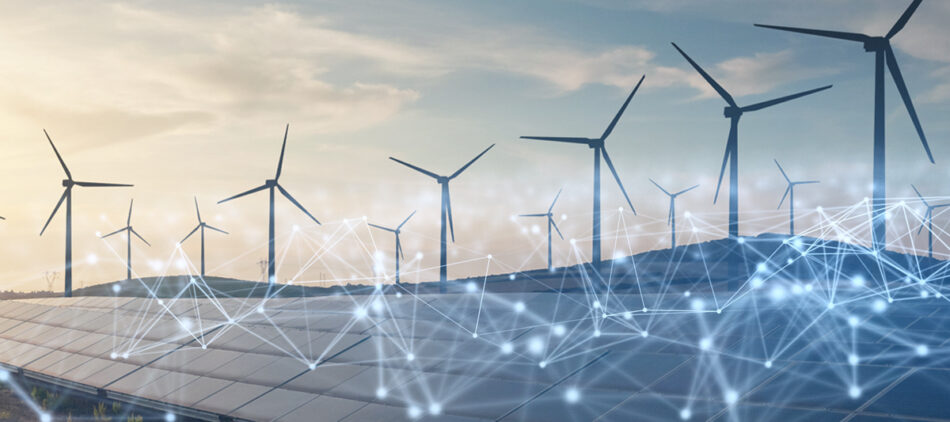
A Smarter Way to Green Your Operations, Cut Costs, and Meet ESG Goals
Summary:
- Greening operations has presented new challenges, sometimes leading paradoxically to dirtier and more expensive energy
- Artificial Intelligence (AI) enables better project planning, helping you identify the most optimal energy configuration
- Conventional solutions do not have the capability to keep up with the demands of climate change, requiring modern AI solutions to fill the gap
Energy has always represented a significant portion of business spending, with the average commercial enterprise investing anywhere from $2.10 to $4 per square foot a year to power its operations. Historically, the goal was to find the most reliable source of electricity at the lowest possible cost, with utility providers typically being the only real option in most markets.
Although cost remains a core driver, two powerful forces continue to shift this paradigm:
- Businesses face growing pressure to go green – both because of environmental, social, and governance (ESG) targets and because consumers increasingly prefer doing business with corporate stakeholders who take environmental protection seriously.
- There now exist a range of “affordable” green technologies to help businesses shrink their carbon footprints. Solar photovoltaic (PV) panels and on-site battery storage were once prohibitively expensive. But thanks to economies of scale and global competition, prices have plummeted – allowing businesses to power more of their operations using sunshine instead of grid electricity generated from fossil fuel.
Unfortunately, this rapid shift to greener sources of power continues to introduce new hurdles.
When Greening Your Operations Becomes Dirtier and More Expensive
Many renewable technologies like solar and wind are intermittent, making it impossible to predict how much power will be generated on-site. Installing batteries helps to mitigate this. However, businesses still struggle to balance their energy storage needs as weather conditions continue to change in real-time. And this is assuming your PV panels and batteries are optimally sized for your specific use case.
The above balancing act is challenging if you own a single commercial property with solar and battery storage installed. But it becomes exponentially harder when managing multiple properties – each with sizable (and variable) energy requirements. In fact, many businesses discover that efforts to green their operations paradoxically lead to more waste, dumping, shortages, and device failures – all of which end up costing them more money than simply staying with grid electricity would.
In effect, going green is sometimes the dirtier and more expensive option.
This remains true even when:
- Project developers take careful measurements before correctly sizing distributed energy resources (DERs) like solar, wind, storage, and electric vehicle-charging – based on that site’s geography and historic energy consumption.
- Property managers balance on-site power generation, consumption, and storage once these DERs become operational – either manually or using a predetermined schedule.
Neither approach yields optimal results given how rapidly grid and weather conditions evolve throughout the day. When humans are making the decisions, there always be lags and imbalances – and by extension – forfeit savings.
By contrast, machines are purpose-built for managing large data sets.
Using Artificial Intelligence to Achieve ESG Goals (under Budget)
With Veritone’s iDERMS Designer, it’s possible to leverage the power of artificial intelligence (AI) and machine learning to analyze prospective investments even before breaking ground. Designer is able to parse reams of historic data to help project developers correctly size DERs assets, complete with extremely accurate forecasts about energy output, payback periods, and ROIs. In fact, Designer can run through thousands of different iterations to find the optimal configuration of edge devices for each project site analyzed.
Better still, this AI-power technology can also analyze terabytes of real-time data to find the optimal balance of power generation, consumption, and storage at any given moment in time. Communicating with sensors and receivers on edge devices, Veritone iDERMS can intelligently and autonomously decide to have your property pull electricity from the utility grid, solar PV panels, or on-site batteries – whichever source is cheapest and most available at that very moment.
That means:
- No manual overrides needed.
- No set schedules necessary.
Instead, you benefit from unparalleled flexibility as iDERMS automatically manages your energy needs in real-time to ensure you always have the greenest power at the lowest price. It’s even possible to harness this technology to strategically generate enough excess power to qualify for state renewable energy credits (SRECs) or compete on wholesale energy markets – both of which result in ancillary revenue streams.
Ready to Green Your Operations and Reduce Energy Spending?
Against a backdrop of rising utility rates, stricter ESG targets, and an aging electricity grid, businesses need smarter tools to navigate this rapidly changing energy landscape. Conventional solutions are no longer up to the task. And as climate change worsens, these solutions will only become more outdated – leading to decidedly more waste, spending, and pollution.
But with the power of artificial intelligence and iterative machine learning, big data is no longer a liability that slows the process down. Instead, it becomes a valuable asset that helps project developers and commercial property managers make better informed decisions that save money, reduce waste, and benefit the entire planet.
To see our AI-powered iDERMS solution in action, schedule a free demo with us today.